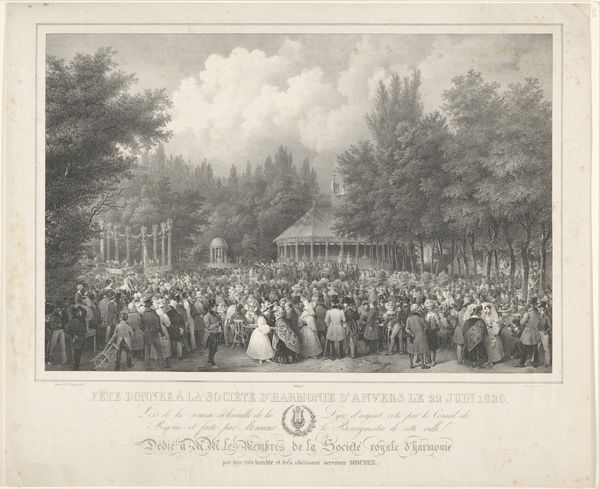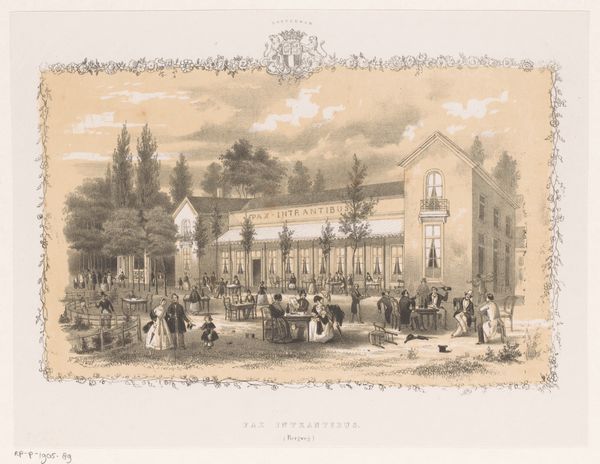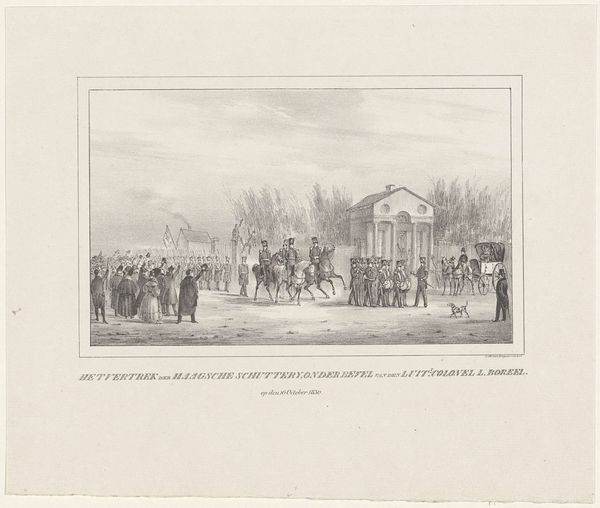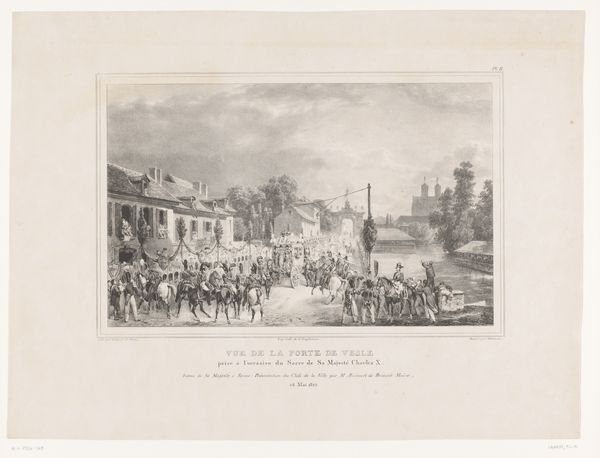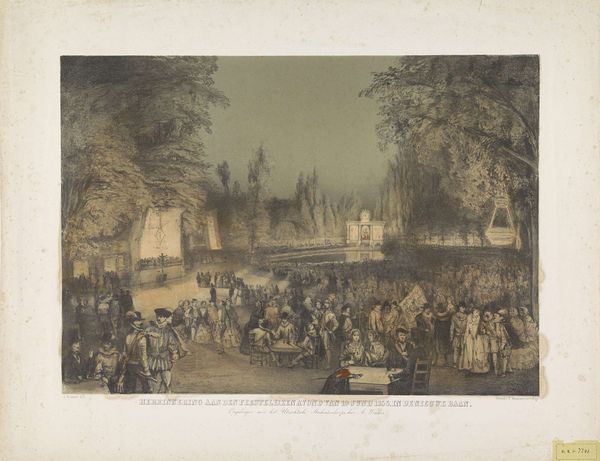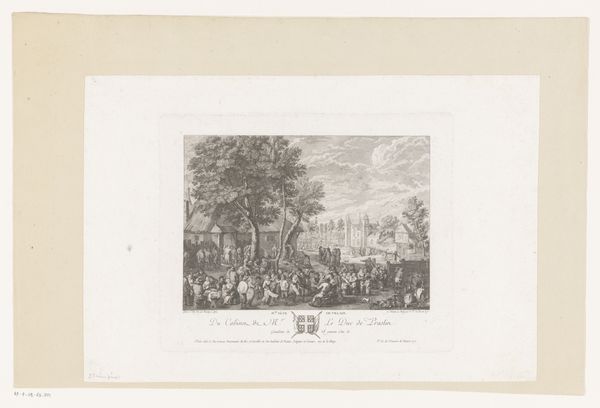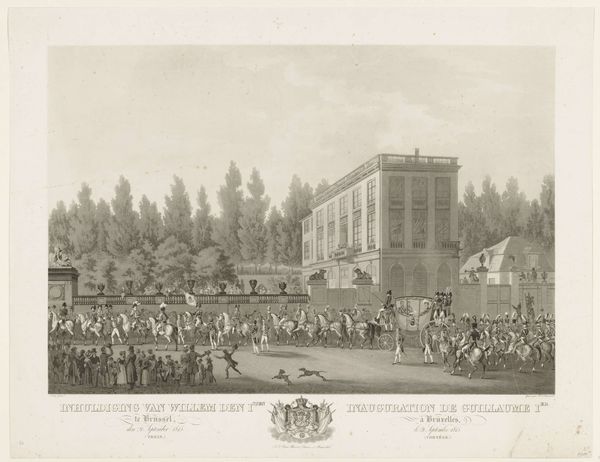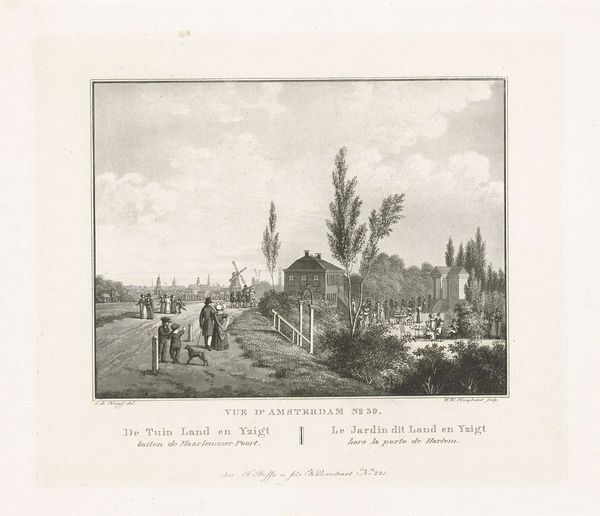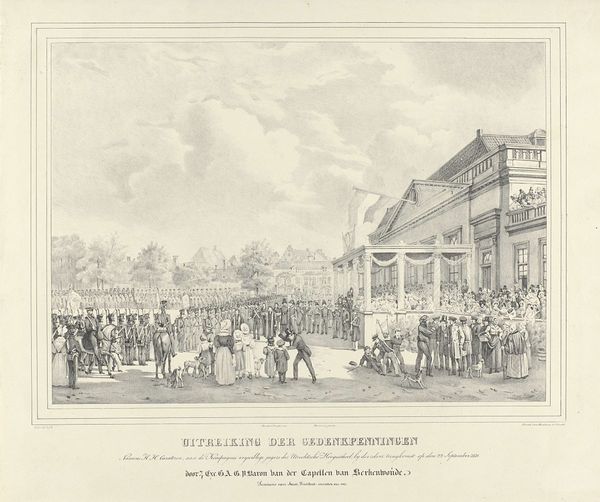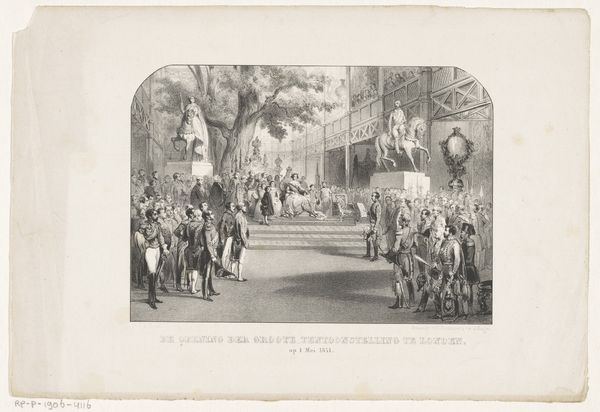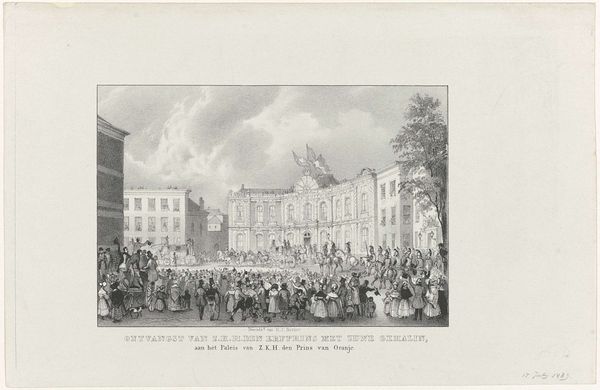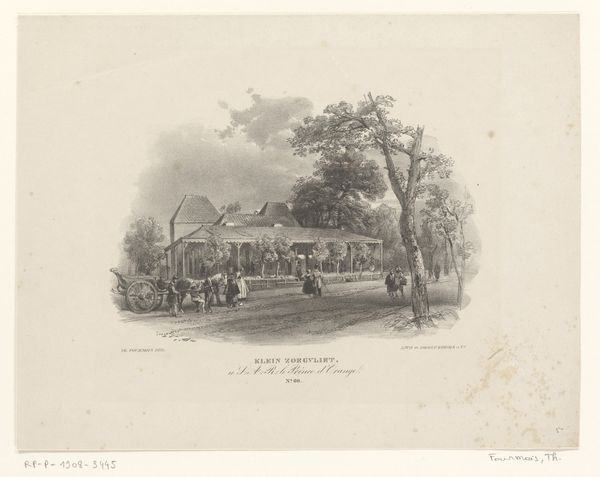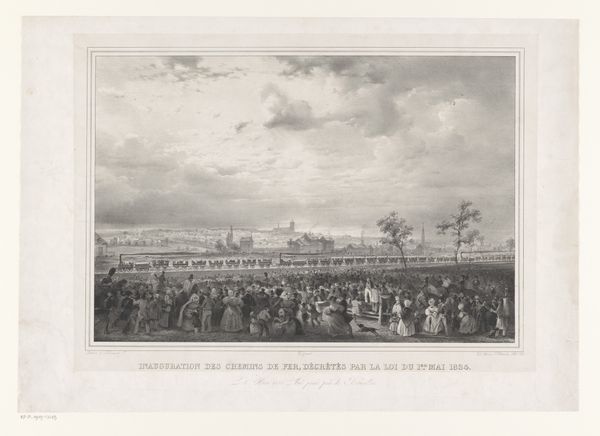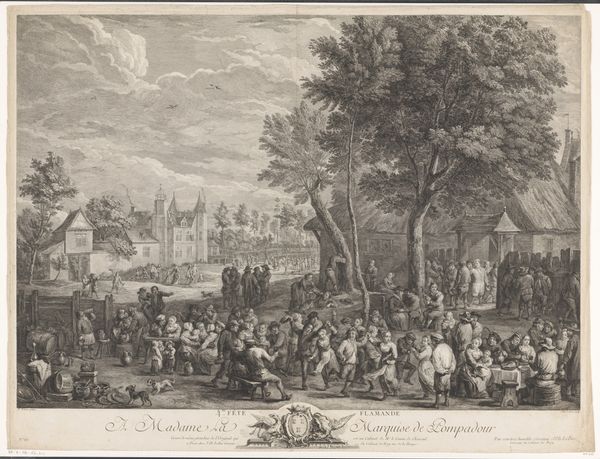
print, engraving
# print
#
old engraving style
#
historical photography
#
group-portraits
#
romanticism
#
19th century
#
cityscape
#
genre-painting
#
engraving
Dimensions: height 456 mm, width 545 mm
Copyright: Rijks Museum: Open Domain
This print, "Feest in de Harmonie te Antwerpen", was made in 1829 by Jean-Baptiste Madou using a technique called lithography. It's essentially a chemical printing process, where the artist draws on a stone or metal plate with a greasy crayon, then treats the surface so that ink only sticks to the drawn areas. Look closely, and you'll notice the amazing range of tones and textures Madou achieved. This was no easy feat. It demanded both artistic skill and technical expertise, and it was only possible because of the division of labor inherent in industrial printing. While Madou may have been responsible for the original design, the actual printing would have been done by skilled artisans. The image depicts a fête, likely for the upper classes, and was dedicated to the members of a royal society, but the print itself was made possible by the labor of many. By understanding the means of production, we can see how prints like this reflect the social and economic forces of their time, blurring the lines between high art and craft.
Comments
No comments
Be the first to comment and join the conversation on the ultimate creative platform.
